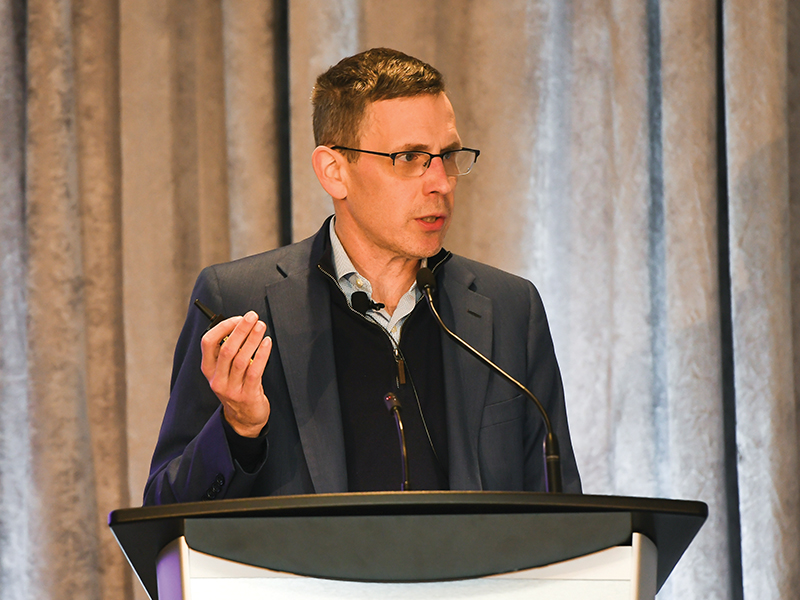
While a third of Canadians are very or extremely confident they’ll be able to retire at the age they want to, around 40 per cent are somewhat confident and a fifth say they don’t think they’ll be able to retire at all, according to MFS Investment Management’s 2022 global retirement survey.
“Those stats for the not confident are up a fair amount since 2021,” said Jonathan Barry, the organization’s managing director and head of client solutions in the investment solutions group, during Benefits Canada‘s 2023 DC Plan Summit.
The survey also found the traditional view of retirement has changed, with 40 per cent of respondents expecting to retire at age 71 or older. In addition, despite the growing conversation around decumulation, only nine per cent of Canadian survey respondents said they want to leave their money in their employer’s retirement plan — with similar results in Australia and the U.S. “That needle will have to move dramatically for any sort of in-plan solution to really work in the future.”
Read: ACPM calling on feds, CAP sponsors to increase focus on decumulation
While Australia has a mature, predominantly DC-based system, the country has only started to focus on decumulation in the last decade, he noted, referring to a 2014 discussion paper on comprehensive income products for retirement and the retirement income covenant, which was enacted in 2022. The RIC requires superannuation funds to prepare a retirement income strategy that considers the Age Pension (Australia’s version of the Canada Pension Plan), tax implications and risk management.
“It’s a principle-based system; this is not a prescriptive system,” said Barry. “It gives the plan sponsor a lot of flexibility and it’s really intended to encourage super funds to come up with innovative solutions for their members. . . . Right now, they just have to document the strategy, they don’t necessarily need to have all of the elements of the strategy in place.”
The U.S. has introduced a lot of retirement legislation in the last 50 years, he said, starting with the Employee Retirement Income Security Act of 1974. For the first 30 years or so, the legislative changes were focused on defined benefit plans, while DC changes were related to the accumulation phase, including automatic features and contribution limits. “It’s really only more recently . . . that the legislation started to focus on decumulation.”
Read: 2021 DC Plan Summit: A look at how DC plan members value target-date funds, ESG investments
A 2014 rule allowed target-date funds to incorporate annuities and the 2019 Secure Act provided a safe harbour for selecting annuities, which was a big fear for DC plan sponsors in terms of risk, noted Barry. The Secure Act 2.0, which took effect in 2022, relaxed some of the rules around annuities, as well as around minimum required distributions, which he said makes it a bit easier to provide retirement income solutions.
Despite the developments in the U.S., legislation isn’t enough, he said, noting there are a lot of drawbacks in providing in-plan decumulation solutions, including that it lengthens the plan sponsor’s fiduciary relationship. “If [members] stay in your plan and there’s an annuity or something, they might be there for 20 or 30 years. That’s a risk that some sponsors don’t want to take that could open them up to legal problems. Increased costs in governance — these things aren’t free and sometimes cost can pass to the member, sometimes the cost has to be borne by the plan sponsor.”
In addition, Barry said the decumulation solutions that are available today will likely look a lot different in five or 10 years, so a lot of DC plan sponsors will be wary of locking into solutions that may not be the norm in a few years. “There’s a lot of hesitancy to be the first mover in the space.”
Read more coverage of the 2023 DC Plan Summit.
